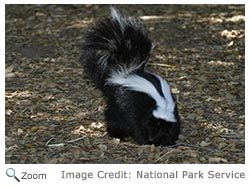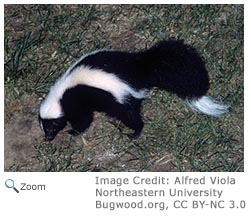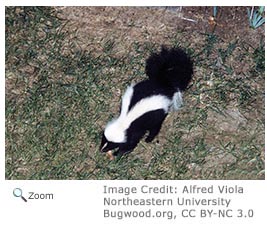Striped Skunk - Mephitis mephitis |
|||||||||
Description The striped skunk is easily identified by the white stripes that run from its head to its tail. The stripes start with a triangle at the head and break into two stripes down the skunk's back. The stripes usually meet again and form one stripe at the base of the skunk's tail. The tail is usually a mixture of white and black fur. Each striped skunk has a unique stripe pattern! Range
Habitat
|
DietThe striped skunk is omnivorous, it eats both meat and plants. Its diet includes insects, small mammals, fish, crustaceans, fruits, nuts, leaves, grasses and carrion (dead animals). What a skunk eats often depends on what it can find and the time of year. Life Cycle
Behavior The skunk is primarily nocturnal. It sleeps in its burrow during the day and hunts at night. It usually doesn't dig its own burrow. It looks for an abandoned burrow or finds a natural hollow under a tree or building. |
||||||||


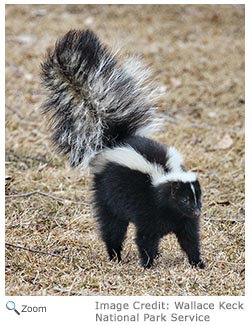
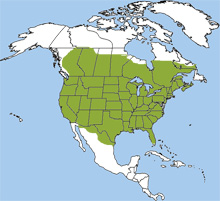 The striped skunk is only found in North America. Its range runs from Canada to northern Mexico. It is found in every state in the U.S., except for Alaska and Hawaii. The striped skunk is found throughout New Hampshire.
The striped skunk is only found in North America. Its range runs from Canada to northern Mexico. It is found in every state in the U.S., except for Alaska and Hawaii. The striped skunk is found throughout New Hampshire. 